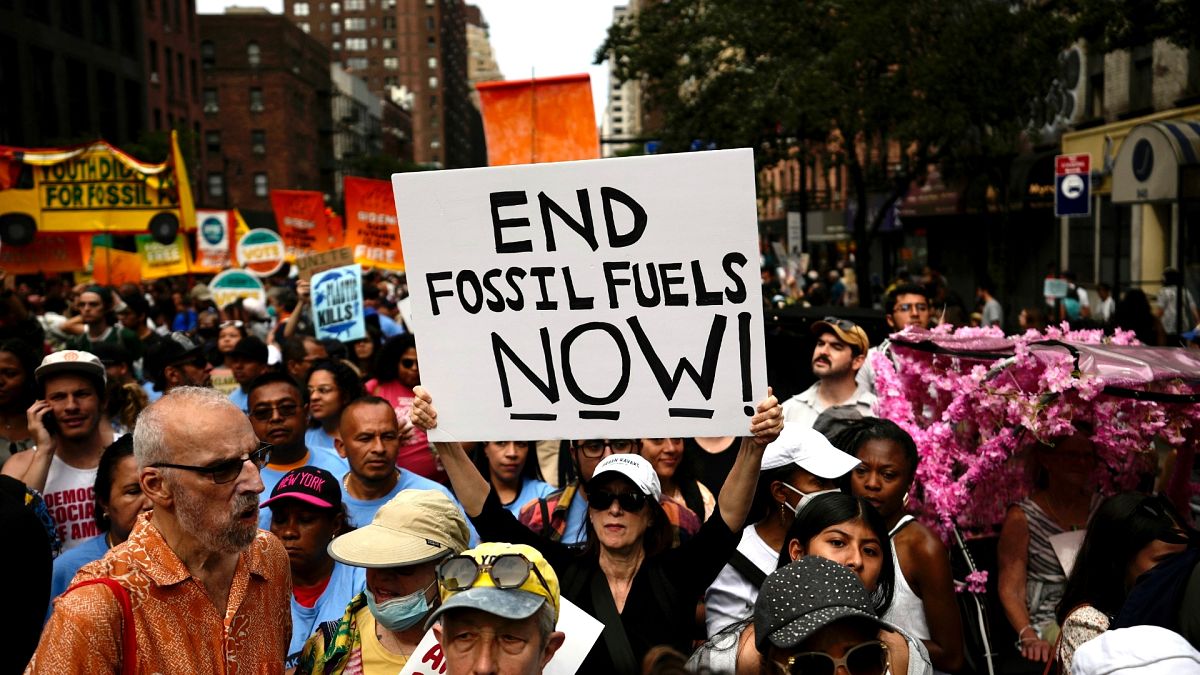New York is hosting Climate Week NYC, an annual event that promotes climate action, at the same time the UN General Assembly takes up the issue on several fronts.
Activists geared up Friday for protests around the world to demand action on climate change just as a pair of major weeklong climate events were getting underway in New York City.
There are planned actions in Berlin, Brussels, Rio de Janeiro, New Delhi and many other cities organised by an alliance of civil society groups and the youth-led group Fridays for Future. More than 150 events are due to take place across 50 countries.
In Germany, where 100 protests have been registered across the country, the biggest climate strikes are expected to take place in Berlin, Hamburg and Munich.
This includes the group’s New York chapter, which planned a march across the Brooklyn Bridge followed by a rally that organizers hoped would attract at least 1,000 people. More protests are expected on Saturday and Sunday.
Why are protesters gathering in New York?
This week, New York is hosting Climate Week NYC, an annual event organised by international non-profit Climate Group in partnership with the UN and the City of New York.
At the same time world leaders will be at the UN General Assembly where they are expected to take up the issue on several fronts, including raising trillions in aid for poorer countries suffering the most from climate change. It comes just 60 days before the next major UN climate summit, COP29 in Azerbaijan this November.
The New York protest was to take aim at “the pillars of fossil fuels” – companies that pollute, banks that fund them, and leaders who are failing on climate, said Helen Mancini, an organizer and a senior at the city’s Stuyvesant High School.
What climate progress has been made since Fridays for Future started?
Youth climate protests started in August 2018 when Greta Thunberg, then an unknown 15-year-old, left school to stage a sit-down strike outside of the Swedish parliament to demand climate action and end fossil fuel use.
In the six years since Thunberg founded what became Fridays for Future, global carbon dioxide emissions from the burning of fossil fuels has increased by about 2.15 per cent, according to Global Carbon Project, a group of scientists who monitor carbon pollution.
The growth of emissions has slowed compared to previous decades and experts anticipate peaking soon – a far cry from the 43 per cent reduction needed to keep warming below 1.5C.
Since 2019, carbon dioxide emissions from coal have increased by nearly 900 million tonnes, while natural gas emissions have increased slightly and oil pollution has dropped a tiny amount, according to the International Energy Agency. That growth has been driven by China, India and developing nations.
But emissions from advanced or industrialised economies have been falling and in 2023 were the lowest in more than 50 years, according to the IEA. Coal emissions in rich countries are down to levels seen around the year 1900 and the United Kingdom next month is set to shutter its last coal plant.
In the past five years, clean energy sources have growntwice as fast as fossil fuels, with both solar and wind individually growing faster than fossil fuel-based electricity, according to the IEA.
Since Thunberg started her protest six years ago, Earth has warmed more than 0.29 degrees Celsius with last year setting a record for the hottest year and this year poised to break that mark, according to the US National Oceanic and Atmospheric Administration and the European climate agency Copernicus.

